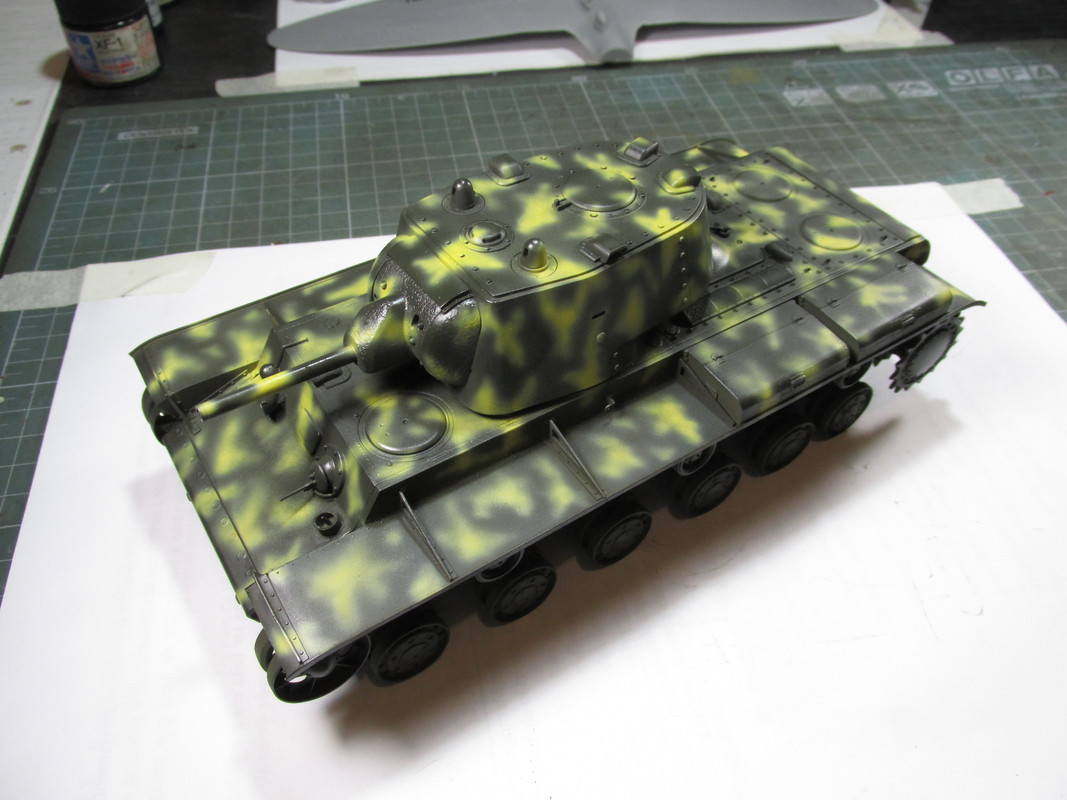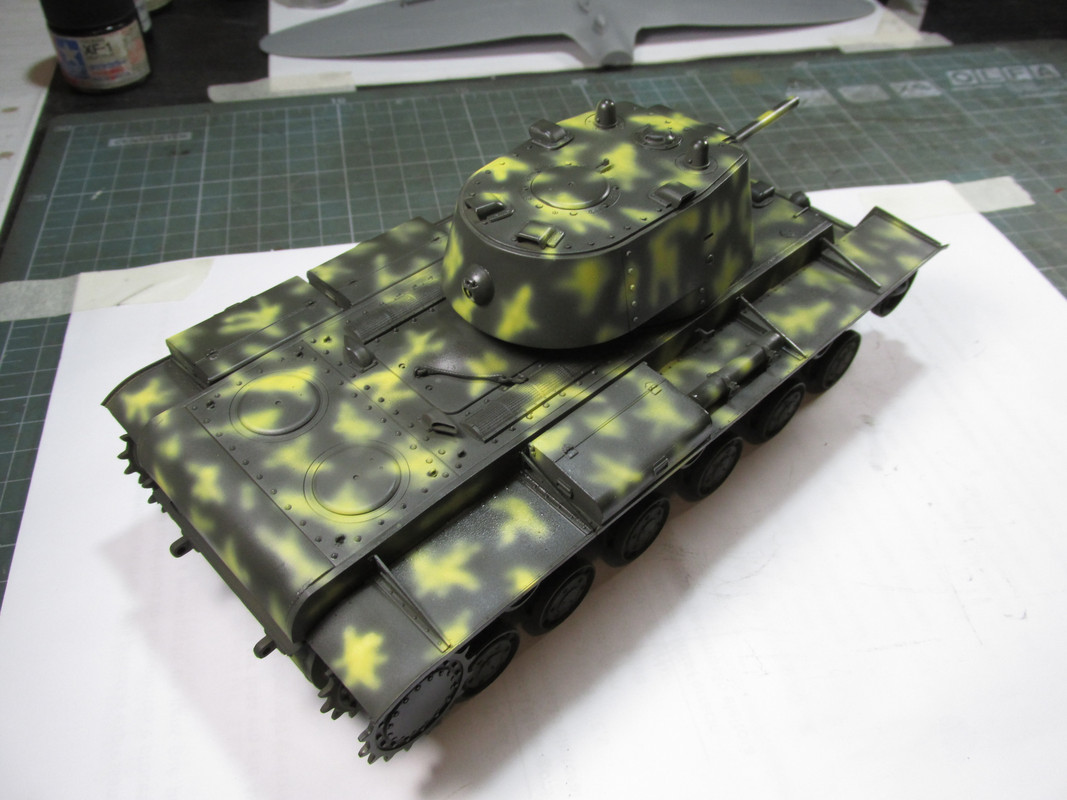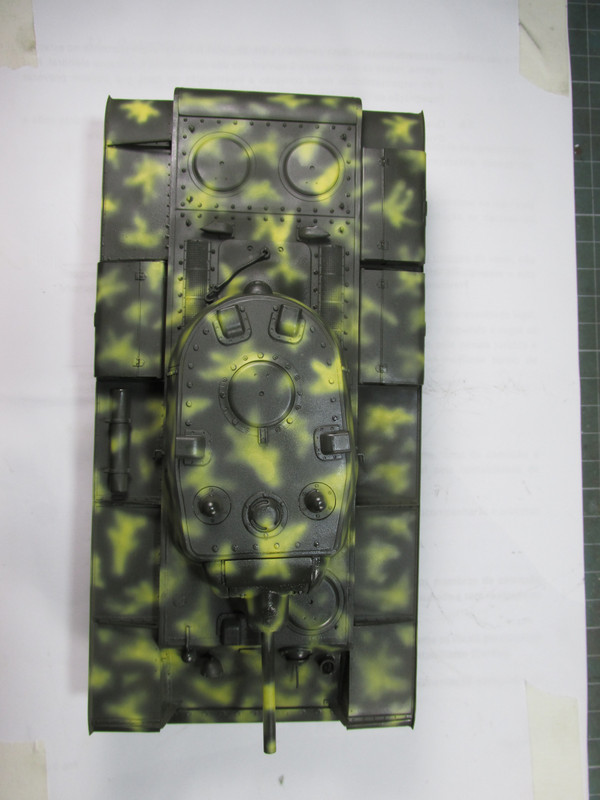kit iniciado faz tempo,descobri guardado e resolvi terminar:

Os dados completos do kit neste link:
https://www.super-hobby.pt/products/Sov ... .1939.html
Hoje consegui deixar pronto para pintura,em breve fotos....
Moderador: Moderadores GT

MVTB escreveu:Marco,não.
Mas no site 4BO Green tem:
Soviet Colors in the Great Patriotic War
The colors used by the RKKA to paint its armored vehicles during the Great Patriotic War have been the subject of much conjecture over the years. While I do not claim to be an expert in this subject, I have come across some useful books and articles, both in print and on-line, which I will attempt to summarize here. Where possible, colors are stated along with their approximate equivalents in the U.S. Federal Standard 595 color scheme. If your computer has a 32-bit color graphics adapter, you can view FS 595 colors at http://www.colorserver.net.
Basic Color
Prior to 1938, all RKKA vehicles, both armored and soft-skin, were painted in a dark olive green color designated Green 3B. In 1938, this color was changed to a nearly identical green known as Protective Green 4BO, which persisted as the basic color until the end of the war.
There has been much debate about the exact nature of Protective Green 4BO, and the subject has inspired much heated argument. These arguments have been exacerbated by variations in the color due to inexact mixing at the various factories, and due to fading in the field under the effects of temperature and the elements. Color degradation in surviving color photographs has not helped the situation, nor has the fact that many of the vehicles photographed during Operation Barbarossa in 1941 were extremely dusty, which altered their apparent color.
RKKA paint mixing instructions from 1941 specify that Protective Green 4BO was a mixture of 40-60% yellow ochre, 15-20% zinc chromate, 10% ultramarine and 10-20% white.
If these instructions are followed using modern equivalents, the result is a range of fairly light greens with a distinct yellow tint, close to FS34257 and quite similar to the color seen on the preserved vehicles at the CAF Museum in Moscow, even though those vehicles are painted using a post-war paint commonly known as 'Warsaw Pact Green'. The similarity to FS34257 is supported by a number of surviving color photographs, after accepted industry-standard color correction techniques are applied.
Some sources have stated that the chemical composition of the paint was not entirely stable and tended to darken over time when exposed to the elements. Other sources refute this claim and instead maintain that the paint was subject to normal fading; ie. that it faded to a lighter shade over time. The color mixture given above, and its FS 595 equivalent, is therefore applicable only to newly painted vehicles and even then, only to those painted with 'fresh' paint stocks.
Kolomiyets and Moschanskiy (see below) cite official Soviet records, examined in the 1990s, as containing a somewhat darker and color with more blue, which approximates closely to FS34102. It must be remembered that the ‘official’ paint chips were no doubt stored in an office environment, in darkness under relatively constant conditions of temperature and humidity, which would likely have slowed though not completely halted any chemical action.
When the U.S. Army evaluated both a T-34 and a KV-1 at the Aberdeen Proving Ground in November 1942, the colors were noted as FS24052, which is darker still. The KV was manufactured at ChKZ in April 1942, and the paint was therefore approximately seven months old when it arrived at the Aberdeen Proving Ground. Chemical darkening due to the age of the paint and its likely exposure to the elements during its journey from Chelyabinsk to the U.S. would account for the darker color.
Given these facts, it is reasonable to assume that Soviet vehicles appeared in a variety of olive green shades. These ranged from FS34257 for newly manufactured vehicles through FS34096 and FS34095 to FS24052 for older vehicles. The shade depended not only on the age of the paint but also on the conditions of sunlight and temperature to which it had been subjected.
Camouflage Colors
In the fall of 1939, the RKKA adopted a system of camouflage colors to be applied over the Protective Green 4BO base coat. Up to two additional colors could be used:
Dark Brown 6K, sometimes denoted as 6RP, was a dark earth brown similar to FS30117.
Yellow Earth 7K was a light sand color close to FS23578.
Both paints were supplied in form of thick paste that was diluted with gasoline, kerosene or a special drying oil. Differences in the dilution medium and/or the mixing proportions caused significant variations in the final colors.
One or both camouflage colors in various patterns were used, depending upon the particular region within the Soviet Union. The table on page 436 of KV - Technical History and Variants gives the breakdown of the different camouflage colors, based upon the various Military Districts.
For winter operations in areas where snow was typical, all vehicles were to be painted in overall white.
This system of camouflage was in effect when German forces invaded the Soviet Union on June 22nd 1941.
However, photographs suggest that few units had actually implemented the schemes, and most vehicles appeared in overall Protective Green 4BO in the summer and fall of 1941. By the early winter, units had begun to apply camouflage to their vehicles but due to the chaotic conditions that prevailed in the latter months of 1941, the officially prescribed schemes were often ignored and numerous improvised schemes appeared.
The RKKA therefore instituted new regulations in the early winter of 1941/42. The regional schemes were abandoned in favor of terrain-specific guidelines, again using Dark Brown 6K and Yellow Earth 7K over Protective Green 4BO. Dark Brown 6K was to be used to cover 15-30% of a vehicle's surface, in large patches to simulate the effect of tree trunks in wooded terrain. Yellow Earth 6K was to be used to cover 15-30% of the surface in areas of ploughed fields or dry earth.
For winter camouflage, a special water-based paint designated Flat White B was issued, to be applied over the existing camouflage. The practice of painting the entire vehicle white was discouraged. Instead, green areas were to be covered completely and dark brown or yellow earth areas were to be covered with a criss-cross pattern of white stripes, applied by hand. In practice however, these guidelines were rarely followed exactly, and vehicles appeared with large patches of white applied irregularly over the other colors, and sometimes in overall white.
Camouflage colors were applied by the individual vehicle crews using brushes, so there was little uniformity between vehicles, even within the same unit. Some crews feathered the edges between the different colors using brushes dampened with gasoline or kerosene, while others left 'hard' edges between the colors.
Photographs indicate that most vehicles continued to appear in overall Protective Green 4BO through 1942 and 1943, with varying levels of white applied during the winter months. In the spring and summer of 1944 however, camouflage colors became more common, though many vehicles still appeared in overall green until the end of the war.
Further Reading:
The section Color Schemes on page 434 of KV - Technical History and Variants provides considerably more detail, as it applies to the KV series heavy tanks.
The best book dealing specifically with the subject is Camouflage of the Tanks of the Red Army 1930-1945 by Maxim Kolomiyets and Il’ya Moschanskiy, translated by Stephen Sewell, published by Armada Vertical 1999. Unfortunately this book is out of print, though it can be found occasionally on eBay or Amazon.
There is a useful article on Soviet colors and camouflage on the Matador Models site in the UK : http://www.matadormodels.co.uk/tank_mus ... w2ussr.htm


